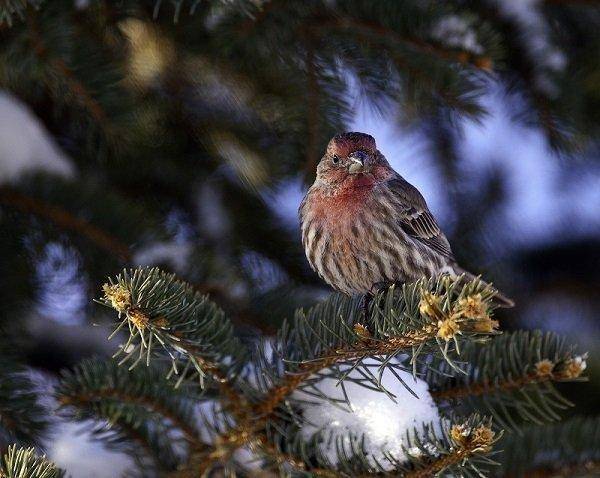Utah Division of Wildlife Resources Press Release
Finding food in the winter can be a tough prospect for Utah’s wild birds.
During the late summer and fall, most birds leave Utah for warmer areas. The birds that stay find a severely reduced food supply and harsh living conditions due to snow, ice, long nights, below zero temperatures, storms and frost-forming inversion layers. Only a few species are capable of finding seeds, berries, dormant insects and other limited food sources needed to survive Utah’s winters.
During the cold months, birds need to eat regularly to maintain their body heat. Residents can help. Unlike deer, which artificial feeding can actually harm, feeding stations can play a pivotal role in helping wild birds survive.
Bird feeding can also bring a host of small, colorful, fascinating characters into any backyard.
Most birds develop feeding patterns, moving from food source to food source along a regular daily route. Birds visiting a specific yard will start to rely on the feeding stations, especially during winter storms, cold snaps and other critical times. If they are not fed, the birds may not have time to find other sources to last them through an emergency.
Once bird feeding begins, it is very important that it continues daily through the winter and well into spring. Bird survival could depend on a feeding station.
Simply scattering food on the ground or hanging a bird feeder in a tree are examples of simple stations. Providing multiple feeders with different seeds, types of perches, multiple sized openings and varying how high each feeder is placed, is an example of a complex feeding station.
Different types of food attract different types of birds. Setting up a complex feeding station should increase the variety of birds that visit the area.
Wild birds have the easiest time finding food when it is placed in an area where the birds would naturally look for it. For example, a spotted towhee, which feeds on the ground, is more likely to find food scattered under a tree. A goldfinch looks for food higher up in the branches.
Four basic feeding locations will accommodate most of the seed eating birds and include: ground, tabletop, hanging and tree trunk.
Quail, juncos and most sparrows and towhees are ground-level feeders. Because they usually search for food in tree branches, chickadees, finches, grosbeaks, siskins and jays are quick to find food in tabletop and hanging feeders. Nuthatches, creepers and woodpeckers prefer tree trunk stations.
Most winter birds will eat sunflower seeds. They especially like the little, black, oily type of sunflower seed, and the grey-striped ones.
White and red proso millet, canary seed and thistle or niger seeds are good for attracting smaller birds such as finches, sparrows, chickadees and siskins.
Suet and fruit will also attract birds. Suet, which is another name for fat, is a rich source of energy for some birds. Simply stuffing the suet into cracks in the bark can turn a tree trunk into a good suet feeder.
Fortunately, birds are more interested in the food than the cost of the feeder or how the feeder looks. Feeders made at home or bought in a store can work equally well. Just make sure the feeder keeps the seeds dry and has enough openings so the birds can reach the food.
While setting up a feeding station, keep these two things in mind: variety and safety.
Providing a variety of foods and feeders, placed at different heights, will attract a greater selection of birds.
Spread feeders out to avoid concentrating a large number of birds in one area. Find or create areas where it’s easy to clean up spilled seeds and other messes. This will help control the spread of disease and food poisoning from moldy or spoiled seeds.
In addition to a constant, reliable source of food, the birds need safe, protected places to eat and rest.
Natural settings birds normally use are great places to put a feeder. Birds select these areas because they not only block the wind and the weather, they also offer escape cover from cats and other predators.
A protected yard is also a good place to put a feeder. Locate the feeder in the open, away from any cover that cats might use to sneak up on feeding birds.
Also, remember to place feeders where they can easily be seen. A good place is near a window, a balcony or another place where the birds can be observed without being disturbed. Placing a feeder close to a window will actually cut down on birds flying into the window because, after leaving the feeder, the birds won’t have time to build up much speed.
Bird feeding can supply hours of entertainment and enjoyment to people of all ages. It can also help supplement resources the birds need in an era when natural habitats are dwindling.

